This is the new Subaru WRX, and it is the one without a clutch pedal. As if that doesn’t seem bad enough, it doesn’t have a dual clutch gearbox or even a traditional automatic, no, this WRX has a continuously variable transmission (CVT), like the one you might find in a Toyota Prius or a Nissan Versa. And, you know what, it’s pretty damn good.
You might think I’ve lost my mind here, but let me set things straight with a little context. I am not going to say that the CVT WRX is better than the manual WRX, because it surely isn’t for hardcore driving enthusiasts. So let’s get that out of the way right from the start. Subaru still makes a manual WRX for their existing customers, and now it finally comes as a 6-speed (Hooray!). That, however is a fairly boring story to write — the manual WRX is a lot of fun, and the Pope is still Catholic.
I wanted to drive the CVT automatic because the 2015 WRX is the first WRX to be offered without a clutch pedal since 2008, and most of us know the 2008 WRX was a total embarassment. In fact, throughout the entire history of the Subaru WRX, there hasn’t been a decent automatic version… ever. So I had a fundamental question that needed to be answered: Is the new CVT automatic WRX any good at all?
I went into this drive wondering if a CVT could ever work in such an iconic performance car, and I came out wondering if a CVT might actually be better than a dual-clutch in many regards.
So often, in the past, has an automatic transmission been just barely tolerable in a performance car. It was something you “settled” for because, let’s face it, your life hadn’t turned out quite the way you’d hoped it would.
That is exactly what I expected to come away with in this WRX, but the sheer quality of Subaru’s execution was worthy of a thunderous applause. I was absolutely blown away with how well the CVT worked in the WRX package. Not only did it not feel like too much of a compromise from the manual, but it actually enhanced many aspects of the car.
This car is everything you want in a WRX, and the CVT transmission makes up for the missing clutch pedal with its multi-faceted dexterity.
You see, a manual transmission is “great” at one thing, and that is adding tangible engagement to the driving experience — you, and you alone, are the mind of the transmission. This is totally ideal when you are out driving for fun on a nice, curvey, traffic-less road. However, WRXs are not sports cars for special occasions, no, they are generally used as practical, everyday transportation.
Driving a manual everyday can be as frustrating as it is enjoyable, but die-hard driving enthusiasts are willing to make the compromise. That said, the majority of the car-buying populace would much rather not be frustrated by their car every day, and that is why most people tend to buy automatics.
Compared to a manual being “great” at one thing, a CVT is “good” at many different things. For one, it is a lot less frustrating in a rush hour traffic jam because you don’t have to do the shifting. At the same time, the paddle shifters are there for your enjoyment when the road opens up and you want to pretend you are Colin McRae.
The merits of a CVT go even further than that. You see, a CVT doesn’t have any actual gears. What it does have is a minimum and a maximum “gear” ratio, and the ability to use the infinitely many ratios between them. You can see a great explanation of how a CVT works here, but think of it like a high-tech, continuous bicycle chain.
What this means is that the WRX feels extremely smooth in motion. It never has to search for gears like a traditional automatic gearbox, and in Normal mode or Sport mode it doesn’t “shift” at all. You get smooth continuous power, that works well to make the turbocharged engine more responsive. Floor it, and you get a right old shove from the 268hp boxer engine, and the acceleration just keeps going, and going, and going as the transmission holds the engine’s revs in the optimal power band.
You can shift with the paddle shifters too. The CVT is able to mimic gear ratios by simply halting its adjustment at certain points. You get 6 speeds in Normal and Sport mode, and Sport Sharp mode gives you 8 speeds and always replicates a geared transmission, whether shifting automatically or manually.
Manual shifting in Sport Sharp is satisfying, and it “shifts” even faster than most dual-clutch gearboxes out there. One advantage of the CVT over the manual tranny is that the CVT’s 8 speeds actually offer more precision on tight, winding roads with various types of corners. I’m used to the 6 speed manual in my 04 STi, and on such roads I can typically use gears 1-4. In this WRX, I was able to use gears 1-5, meaning that I had a “correct gear” for more types of corners.
So the CVT works quite well in performance terms, but how about the rest of the new WRX?
The 2015 WRX has a new turbocharged 2.0L boxer four, with a lot of torque available early on in the powerband. Working with the CVT, it really gets up and goes whenever you want it to. The WRX is definitely quick, and eager to use its performance, especially from lower speeds.
At higher speeds, the new WRX has the same issue all stock Subarus do: acceleration really falls off after 80mph. This is because the stock exhaust coming out of the back of the turbo is too small, and doesn’t flow well. The issue is fixed by fitting an aftermarket “Turbo-back” exhaust with larger 3-4” piping, and the ECU tuning to go with it. The difference this upgrade makes in the car’s drivability is enormous, and I highly recommend it for any WRX owner to really get the most out of their car.
When it comes to handling, Subaru has given the new WRX an Ace to put up its sleeve in the form of torque vectoring. Basically, the car becomes completely neutral as you push harder into a corner, whereas the old WRX just went progressively into understeer. The new WRX feels like a slightly softer Mitsubishi Evo, and that is extremely high praise. I’m not sure the torque vectoring raises the actual handling limit of the car, but it certainly makes it easier for average drivers to get closer to it.
Driving sensations are a Subaru strong point. Loads of information from the road reaches the driver through the chassis, and the steering is pretty lively too, even though it’s electronically assisted. The WRX responds to steering inputs with immedeacy and accuracy, giving it an energetic, “sporty” sensation. The brakes feel strong and progressive, and the throttle response varies with the selected driving mode.
What I loved specifically about the WRX was its chassis composure over varied road surfaces. Such solidarity is a Subaru hallmark, and it really gives the WRX a confident, rally-esque feel in how it drives. The torque vectoring helps with the handling balance, but the chassis’ great setup helps the car remain stable on imperfect, real-world roads.
The 2015 WRX, CVT or manual, comes with many tangible improvements, but is also a bit scaled back in its flavor compared to the car it replaces. Gone is the aggressive widebody stance of the 2014 model, exchanged for a nicely proportioned, but far more forgettable, look that won’t turn many heads in town. In fact, if you forgo the bright red or blue paint, the new WRX is pretty much a sleeper. Whether that’s good or bad is subjective, but there will surely be many aftermarket parts available to enhance the visual appeal of the 2015 WRX.
On a personal note, however, I must concede that there are advantages to having a car that doesn’t call tons of attention to itself. An officer is far less likely to let you go if your car is loud and has an obnoxious wing on the back. I’ve noticed a big difference between the attention I get while driving my modified Subaru STi and my Volkswagen CC daily driver. I had a cop decide not to pull me over after blowing past him at 90mph in the CC. He pulled out and followed me like he was going to get me, but then I got off at my exit and he just let me go. That surely would not have happened in my STi.
In practical terms, the new WRX is a bit larger than the old model, with noticeably more room in the rear seats. It’s a fairly standard sedan, overall, and that’s always been one of the WRX’s advantages as a perfomance car.
Fit and finish have also improved a notch or two, which is nice given that many WRX trims will top the $30,000 mark. It’s still no Audi, but now there’s less compromise.
One of the biggest everyday-use improvements for the new WRX has to be fuel economy. WRXs have traditionally been pretty thristy, but the 2015 models show a marked improvement.
Don’t just look at the EPA numbers, though, because they’re not realistic. Like many instances, I’ve dug and found the true story for you, my dear readers, instead of just regurgitating the official numbers at you.
The EPA rates the CVT WRX pretty low in fuel economy because they ran the test in each of the car’s different driving modes, Normal, Sport and Sport Sharp, and they averaged the results. Obviously the MPG in the sport modes would be awful because the car is keeping the revs up high, however, Subaru engineers adamantly contend that the CVT WRX will be able to see 30mpg in Normal mode with efficient driving. A 30mpg WRX, yet another reason to consider the CVT model.
Now, obviously, if you drive around with your foot buried into the throttle, you can’t expect great mileage, but the fact that this car is capable of getting good fuel economy is a huge plus for daily commuters.
So the new WRX has basically been improved in every way, but is it worth writing a check for?
Value has always been a major selling point for the WRX, but this new one has moved a bit up market. It is no longer a cheap rally toy, and that means it’s facing competition from both above and below.
Prices for the WRX effectively range from around $27,000 to around $35,000.
For the WRX’s base price you can have a Ford Focus ST loaded up with options. The Focus ST is more like the flavor of earlier WRXs, a pocket rocket, if you will. Performance between the two will be similar, but the WRX is a lot more polished at this point. The WRX’s all-wheel drive also puts it in a totally different category for people living in areas with bad weather. So you pay more for a WRX over a Focus ST, but you also get more for your money.
The Mitsubishi Lancer Ralliart is a dated, but formidable competitor for the WRX. That said, it is actually more expensive than the WRX, so while I like the Lancer a lot, you’d be foolish to buy one over the WRX at this juncture.
The new Volkswagen GTI is supposed to be pretty good, and it definitely goes head to head for buyers with the WRX. The WRX has the all-wheel drive advantage going for it, and the interiors of the two cars are pretty similar in quality. Unlike the Focus ST, the GTI has a great automatic option with its DSG transmission, so it appeals to the same buyers as the CVT WRX. I’ll have to see how they compare when I review the new GTI in the future.
Possibly the most direct competitor to the Subaru WRX, for informed buyers, is the new Audi A3 2.0T Quattro. It shares an almost identical package to the WRX and sits in the same price range. The Audi is a bit nicer and more luxurious than the WRX, but the WRX is surely the more capable performer. If you match the two cars, feature-for-feature, a loaded A3 Quattro costs about $40,000 to the WRX’s $35,000. However, at the $35,000 price point, a medium-optioned A3 may be a tempting alternative to a loaded WRX, especially for those who care more about appearances than actual driving performance.
A little different in package, but worth mentioning, is the BMW 228i. Being a rear-drive coupe, it’s definitely different from the WRX in practical terms, but it is still a fun, sporty, turbocharged car for similar money. Like the Audi A3, a loaded 228i costs around $40,000, but there is again a great option available at the $35,000 mark: a 228i Sport with a manual gearbox. Driving purists just might be tempted.
Lastly, a WRX offers an extremely good value for people who want a sporty all-wheel drive car, and would otherwise be considering an Audi A4 or BMW 3 series. If all you want is something that’s practical and fun to drive, spending the extra money for the luxury brands, when you could have a loaded WRX, is a bit pointless.
So the Subaru WRX continues to be a great value, overall. It has a lot of stiff competition, especially in it’s higher price range, but it continually holds its own against any contender. For driving enthusiasts it will never disappoint.
I genuinely think that this is the best WRX that Subaru has ever made. It has improvements in all of the right places, handling, fuel economy, transmission options, practicality, and even some nicer fit and finish. The WRX has certainly matured a bit with this new generation, but in all good ways.
The CVT model is a genuinely great car, and a solid purchase for anyone who can’t drive stick, or whose daily commute would make a manual a pain in the neck. The CVT WRX actually has some real advantages over the manual WRX, and who would’ve thought that?
Look, I’m often a manual snob. I hated the automatic version of the Scion FR-S, and I’ve caught a lot of flack from people who made the mistake of buying one. I’ve always been the guy who thinks less of people in automatic sports cars when a manual option was avialable. That is still my attitude for many types of cars, but I have to give credit where credit is due.
In recent years, many good “automatic” transmissions have come out in the form of dual clutch gearboxes, well-programmed traditional automatics, and now CVTs. In the case of a well-executed automatic transmission, one that doesn’t dilute the overall driving experience, I wouldn’t think less of anyone who bought one. Hell, I, myself, would buy a lot of the clutch-pedal-less cars I’ve driven over the years.
The point I want to make is that I was really pleasantly surprised by the CVT-equipped WRX. Subaru has done a killer job with it. I really expected to be let down in some way, but I wasn’t. In fact, I’d even consider buying a CVT WRX as a replacement for my CC when it’s paid off. It’s that good.
The only thing that remains to be seen is how well the CVT transmission can handle modifications. If it can be reliable up to at least 350awhp, I think it will be fine for most buyers, but if it proves fragile, then it could become an Achilles Heel to an otherwise fantastic car. We will have to see how things in the aftermarket pan out, but for now, I give the new WRX, yes even this automatic version, a big thumbs up!
WoM Score: 2015 Subaru WRX CVT Automatic
Primary Function: Performance: 2
Secondary Functions: MPG(2) Luxury(1) Practicality(2): 2
Visual Appeal: 1.5
Build Quality: 2
Value for Money: 2
Final Score: 9.5/10
PS: A very special thanks to Haldeman Subaru/ Haldeman Auto Group for giving me access to this 2015 Subaru WRX. Everyone at the dealership was very helpful, and were more than happy to let me do what I needed for this review. They have a reputation for treating their customers this well too.
Check out Haldeman Auto Group’s website
Like them on Facebook (Subaru and Ford)
Follow them on Twitter
Check out their photos on Instagram
-Review by Nick Walker

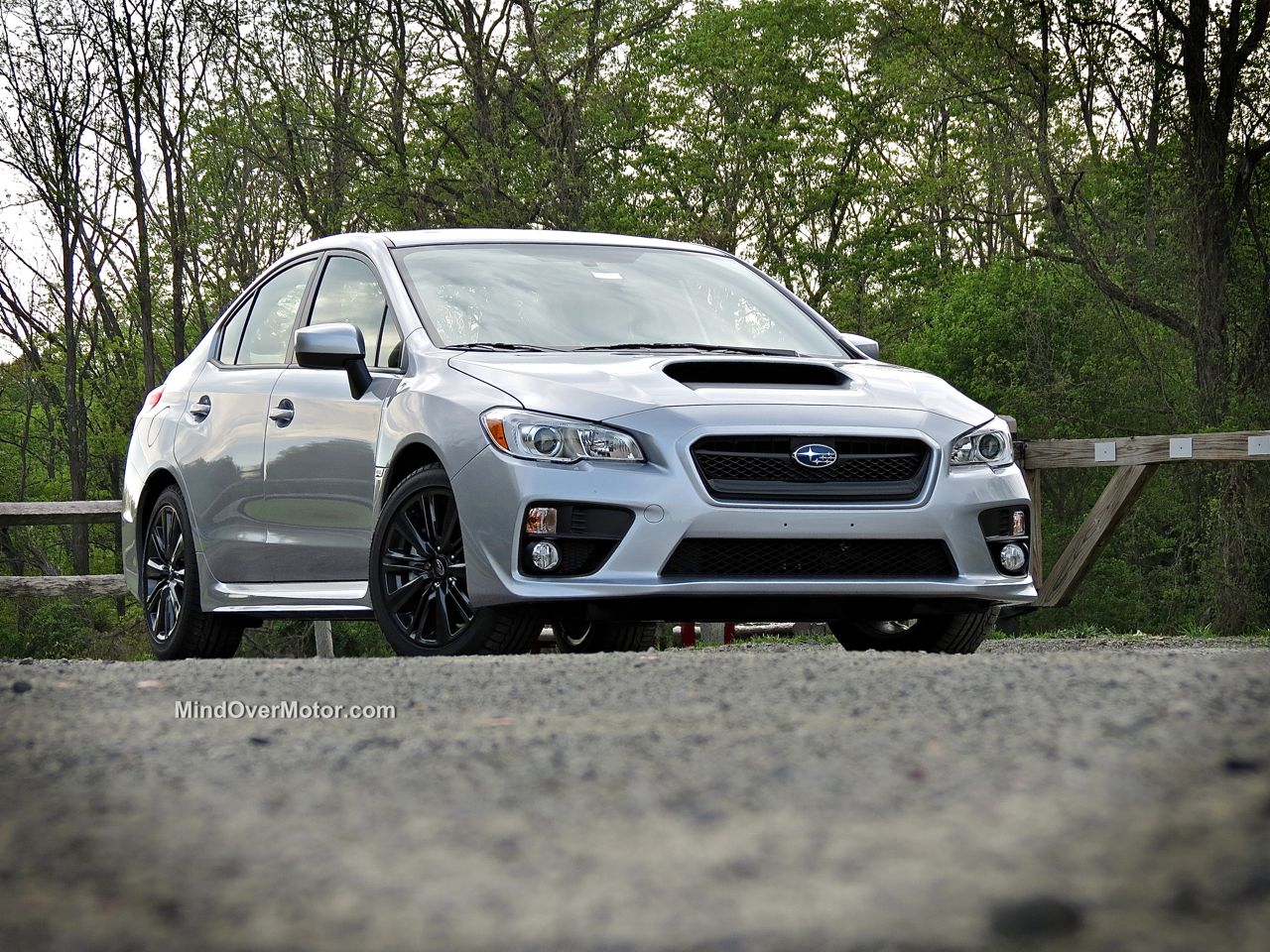
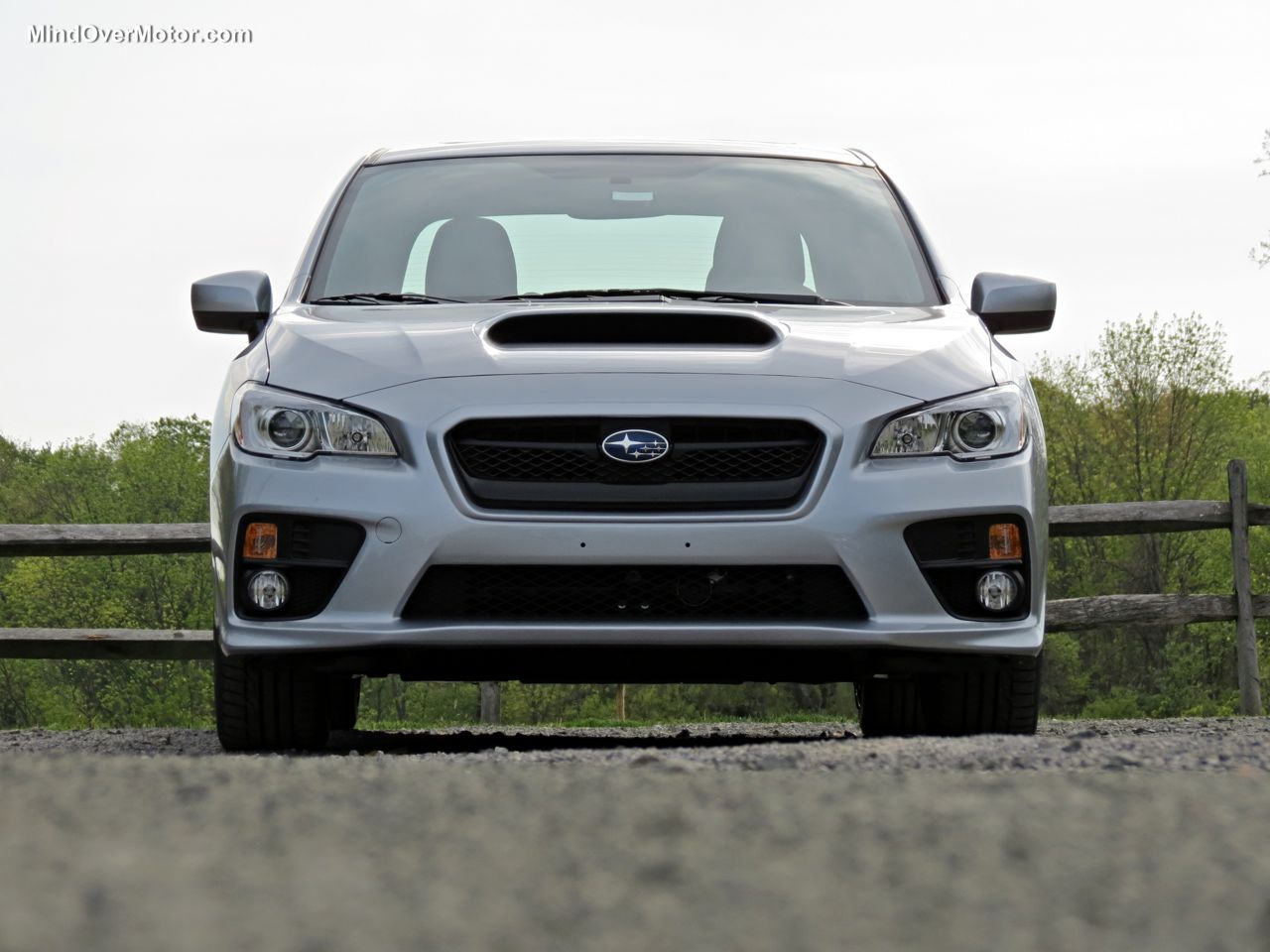


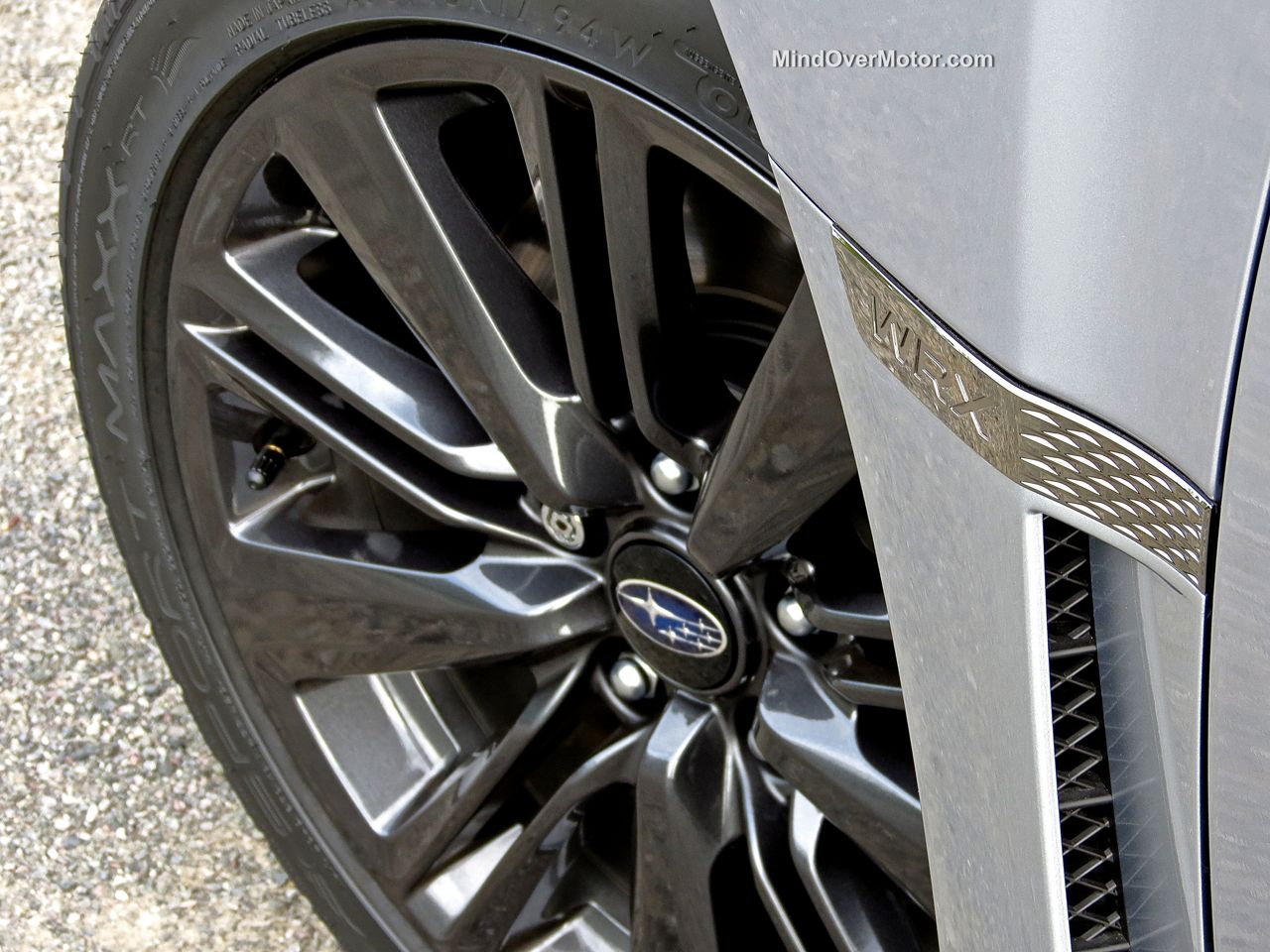
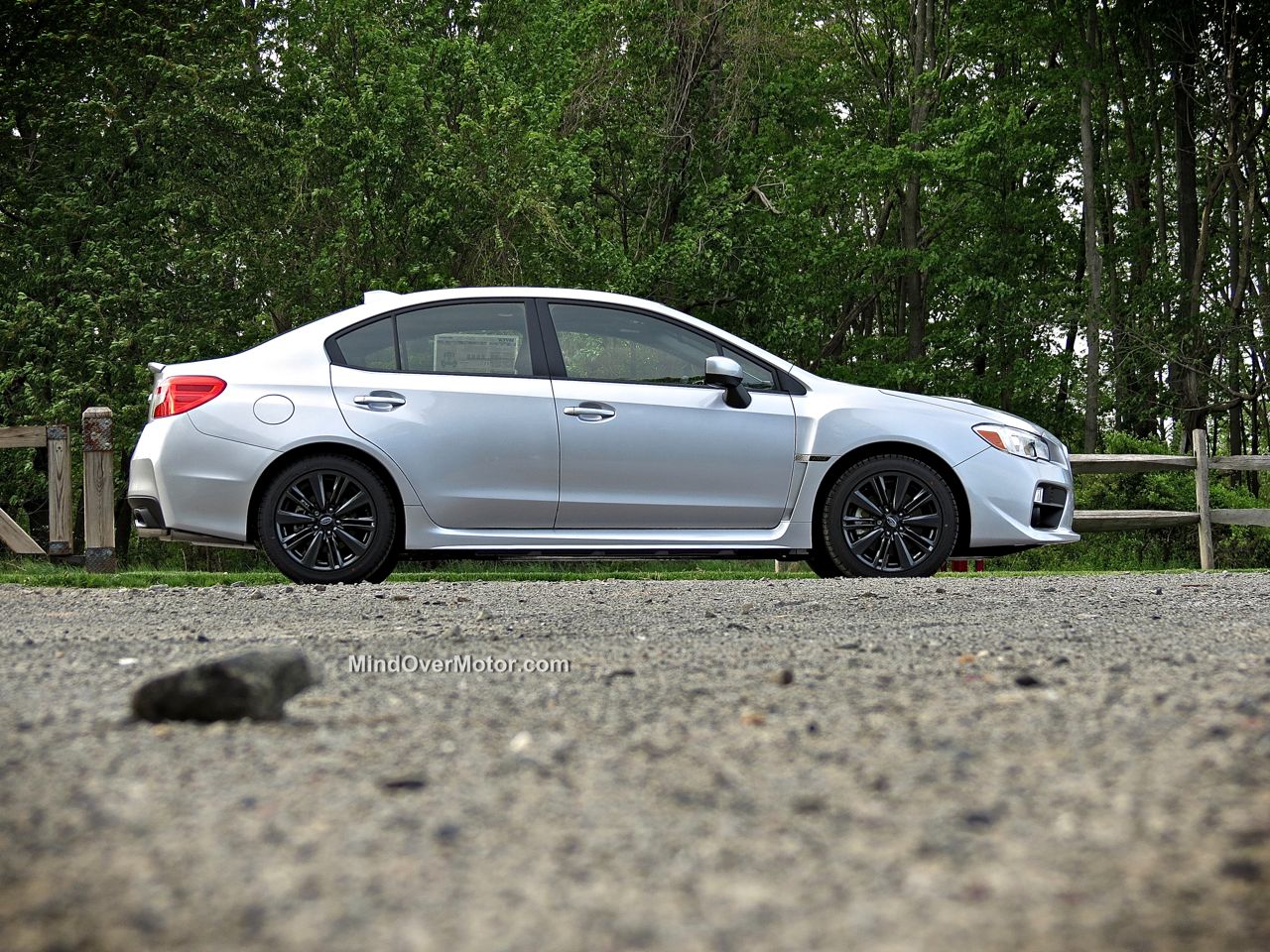
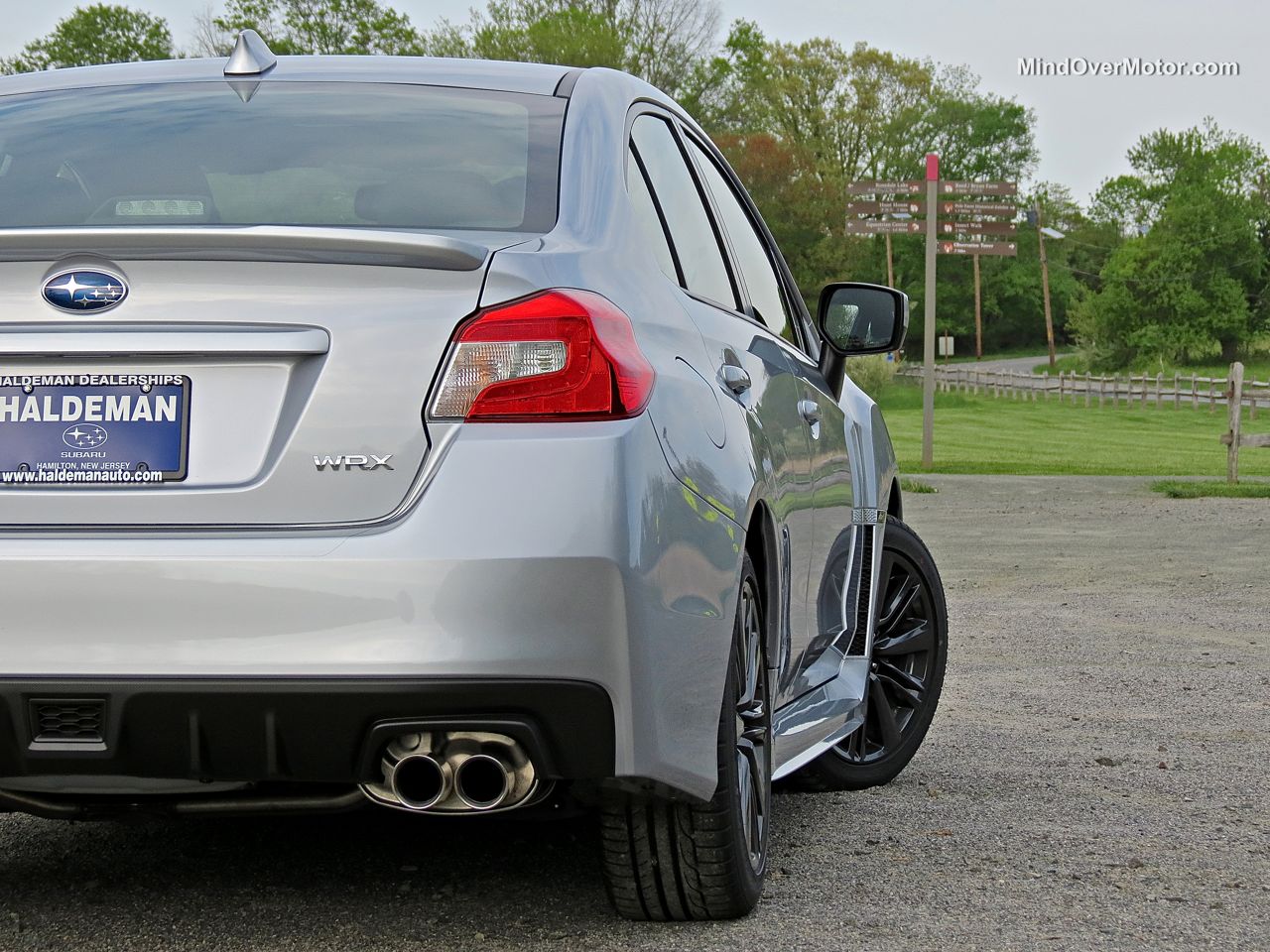
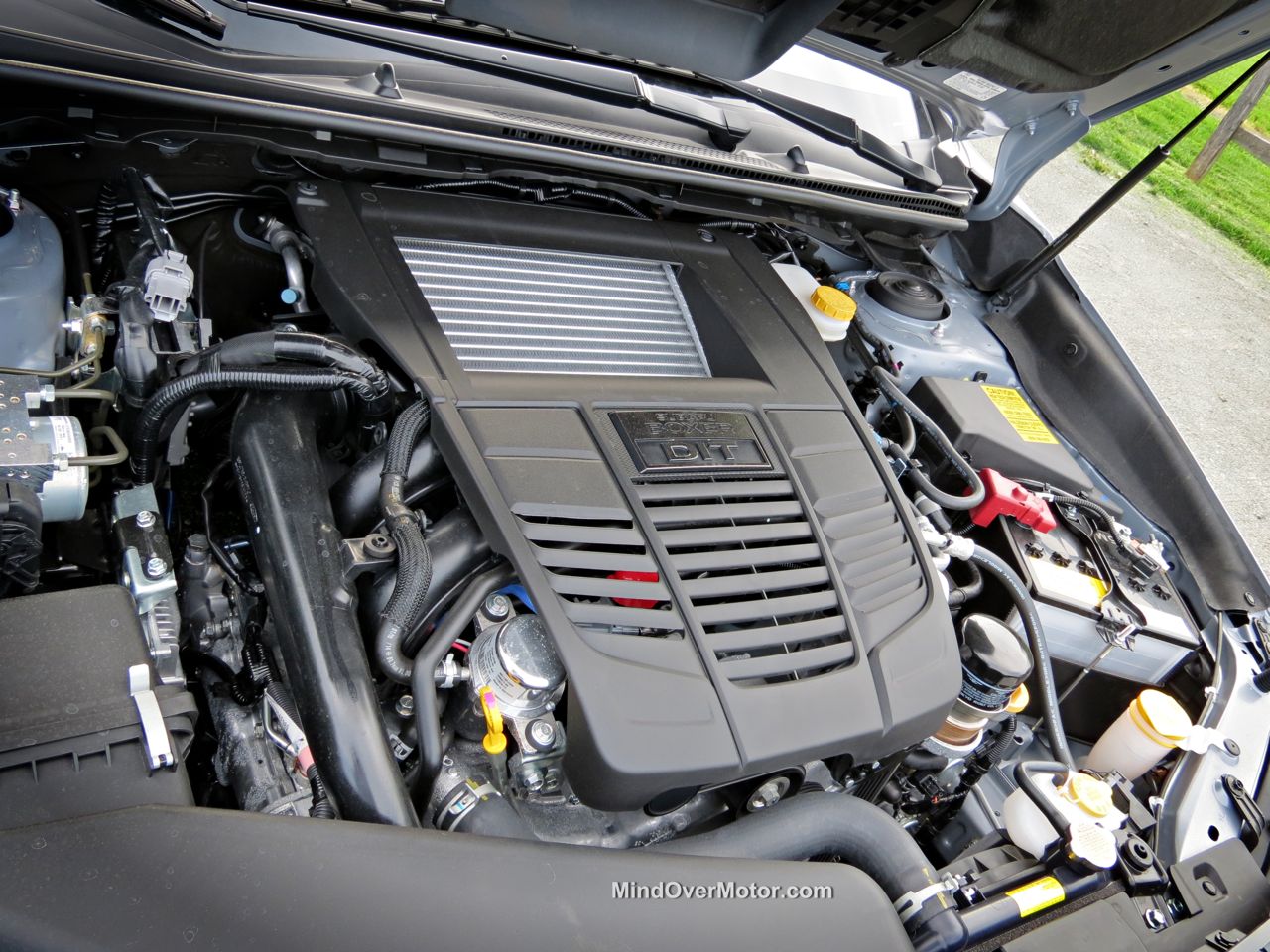
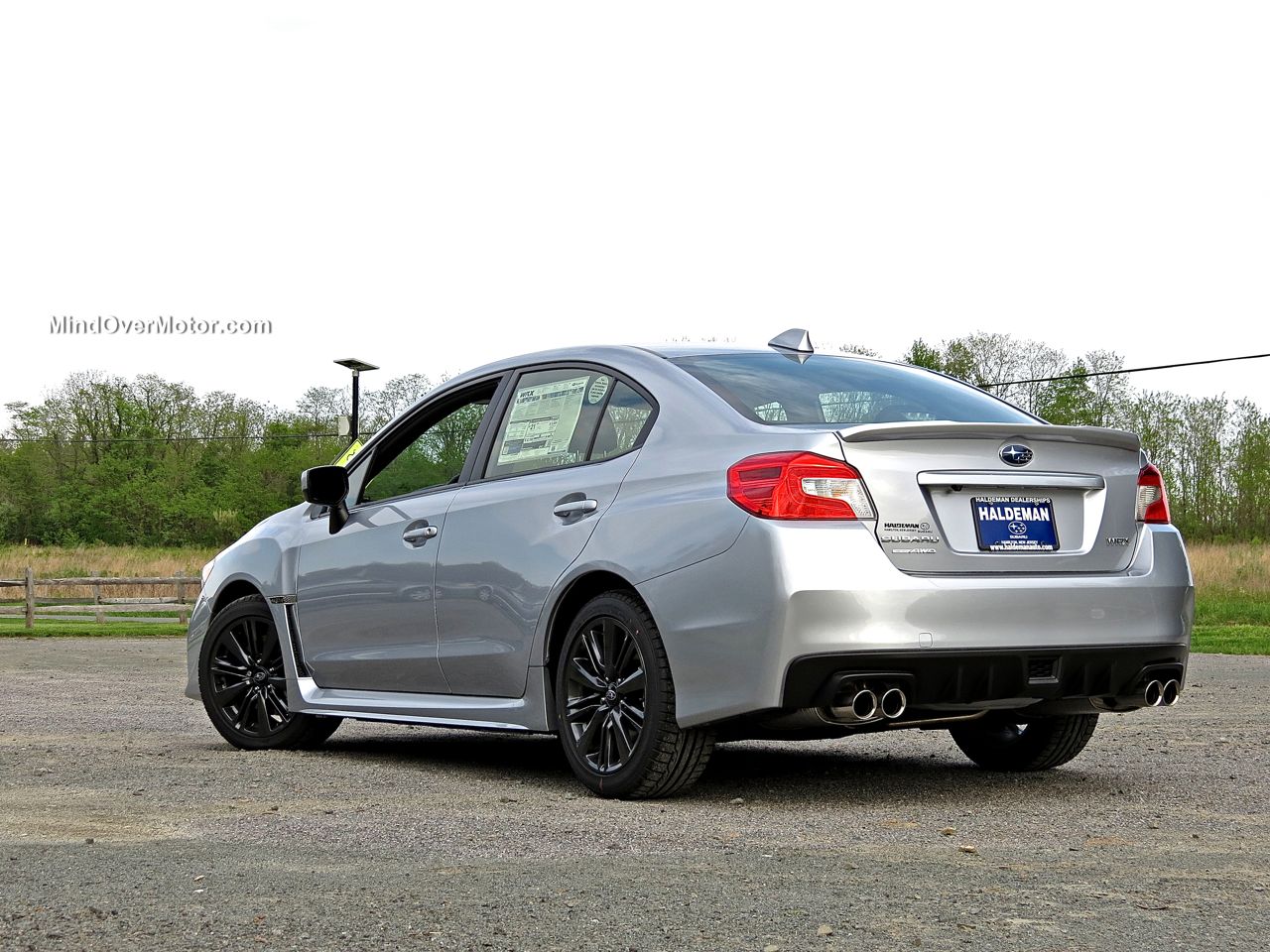
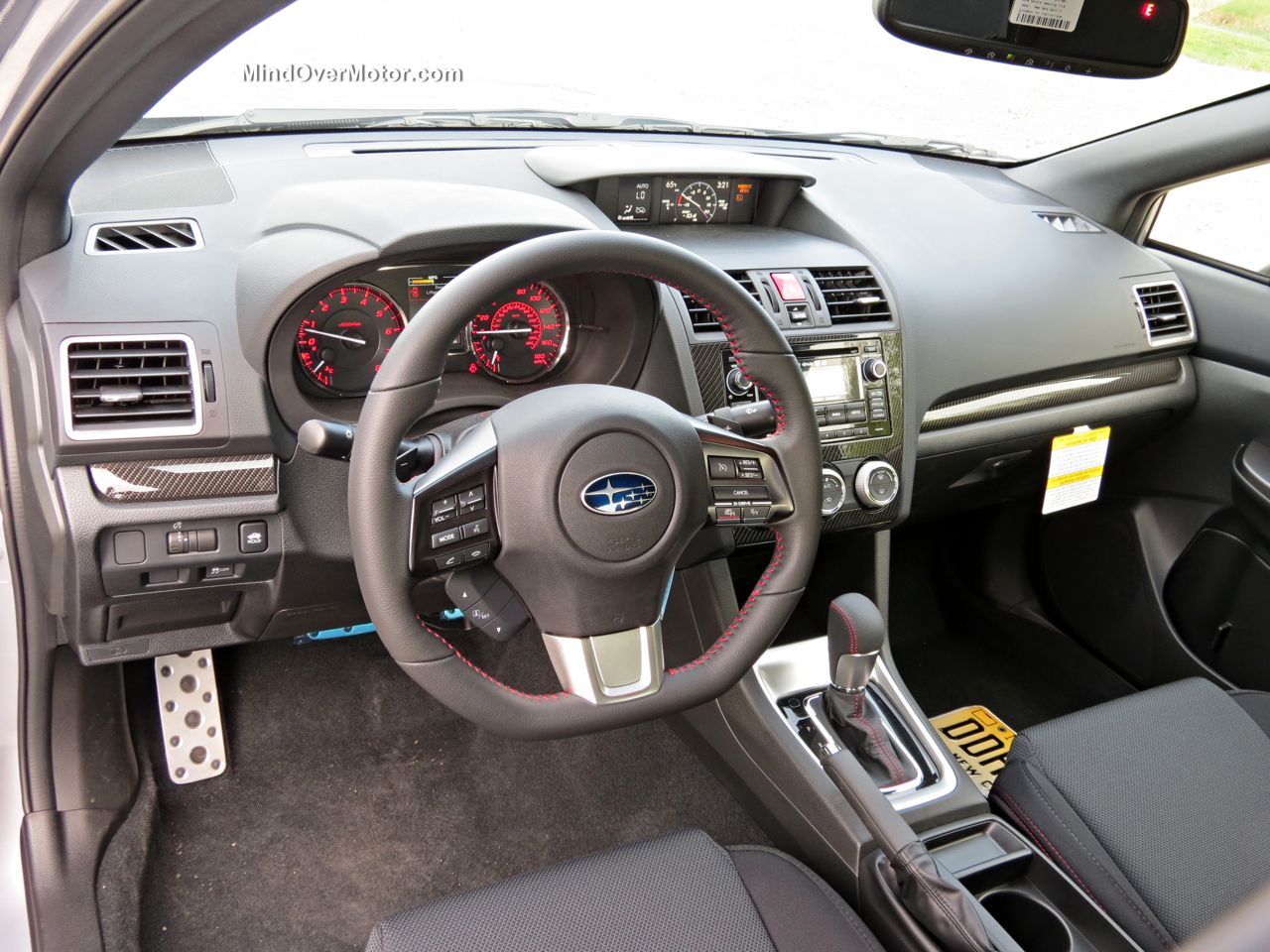
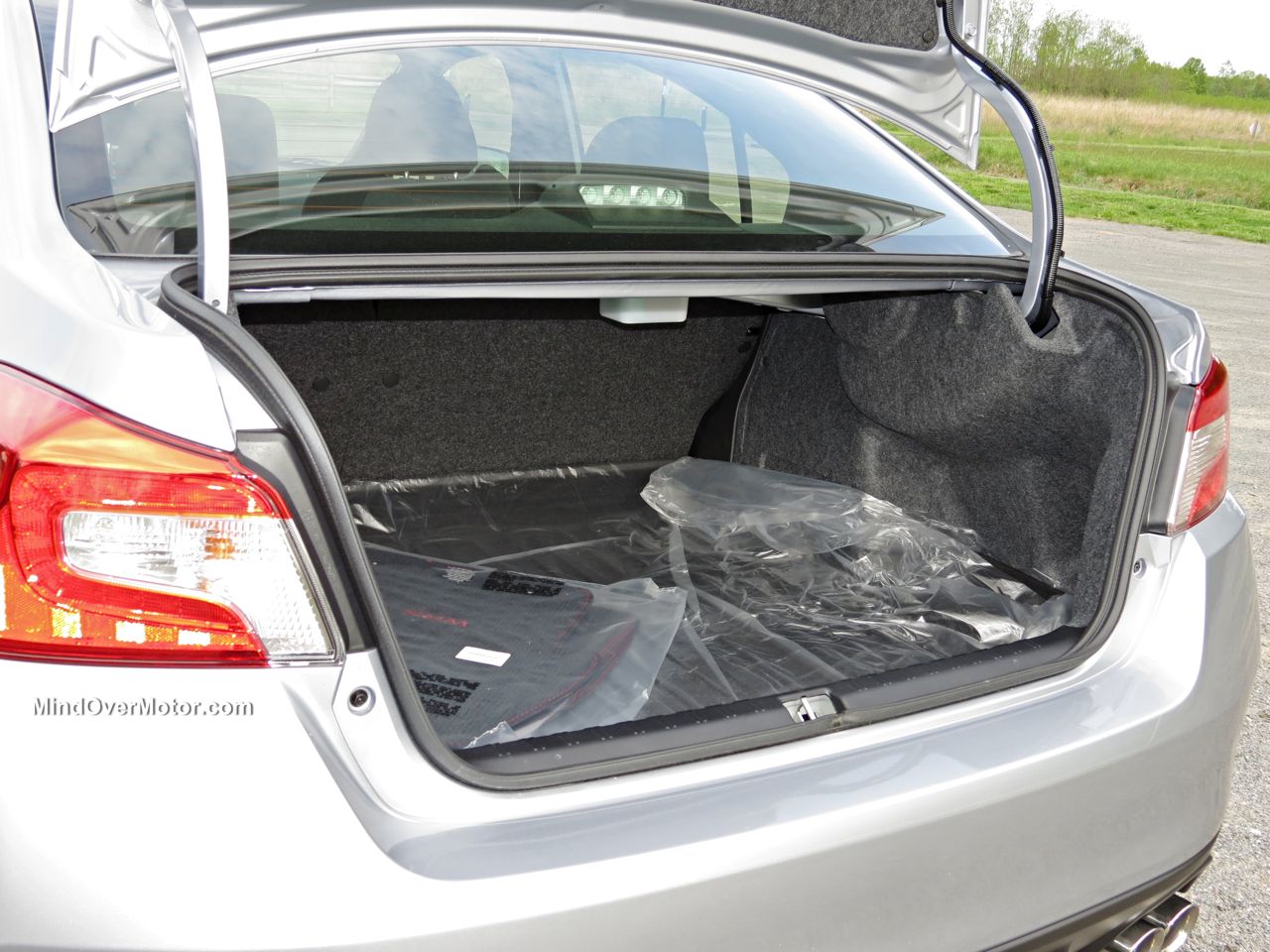
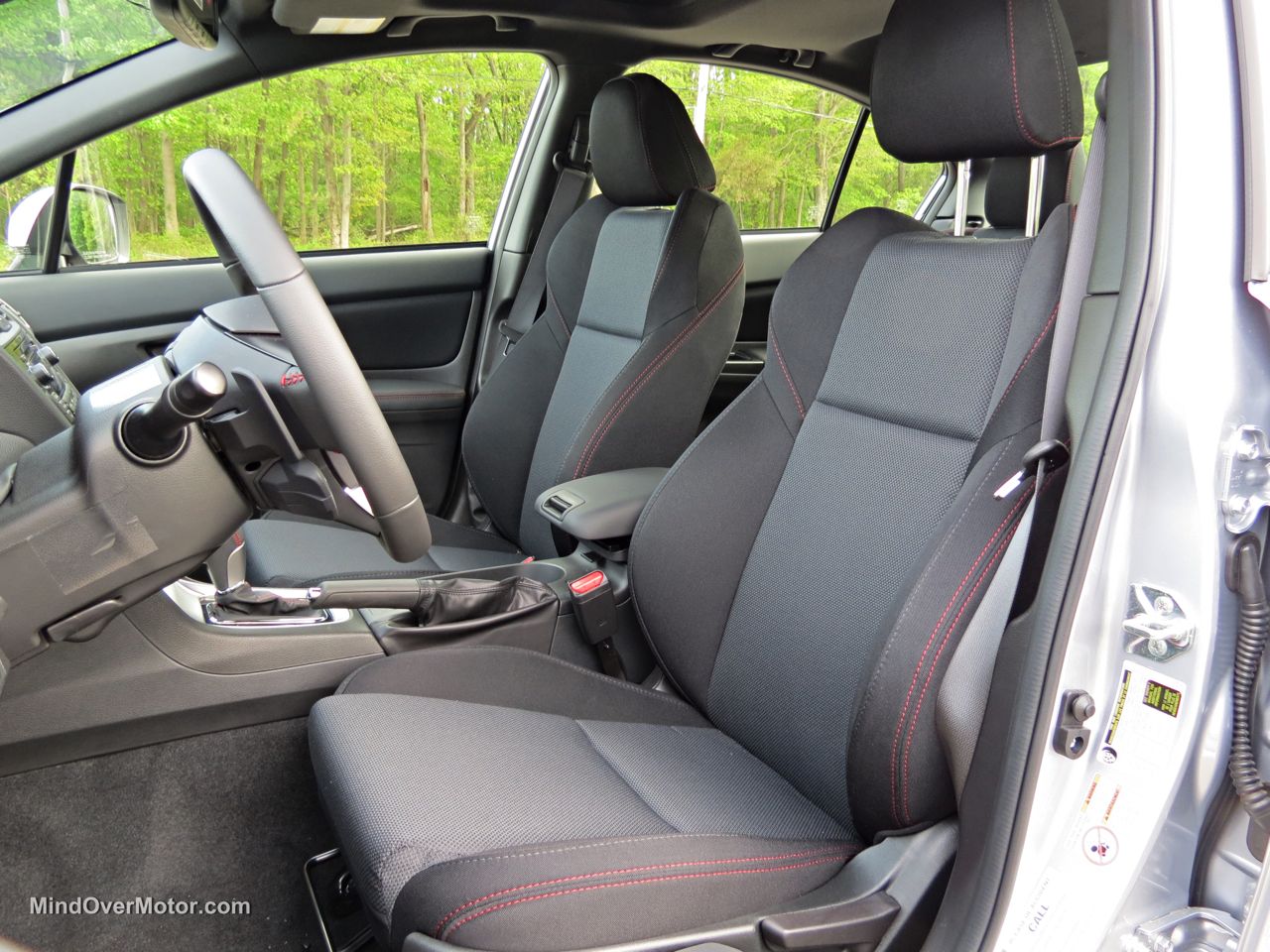

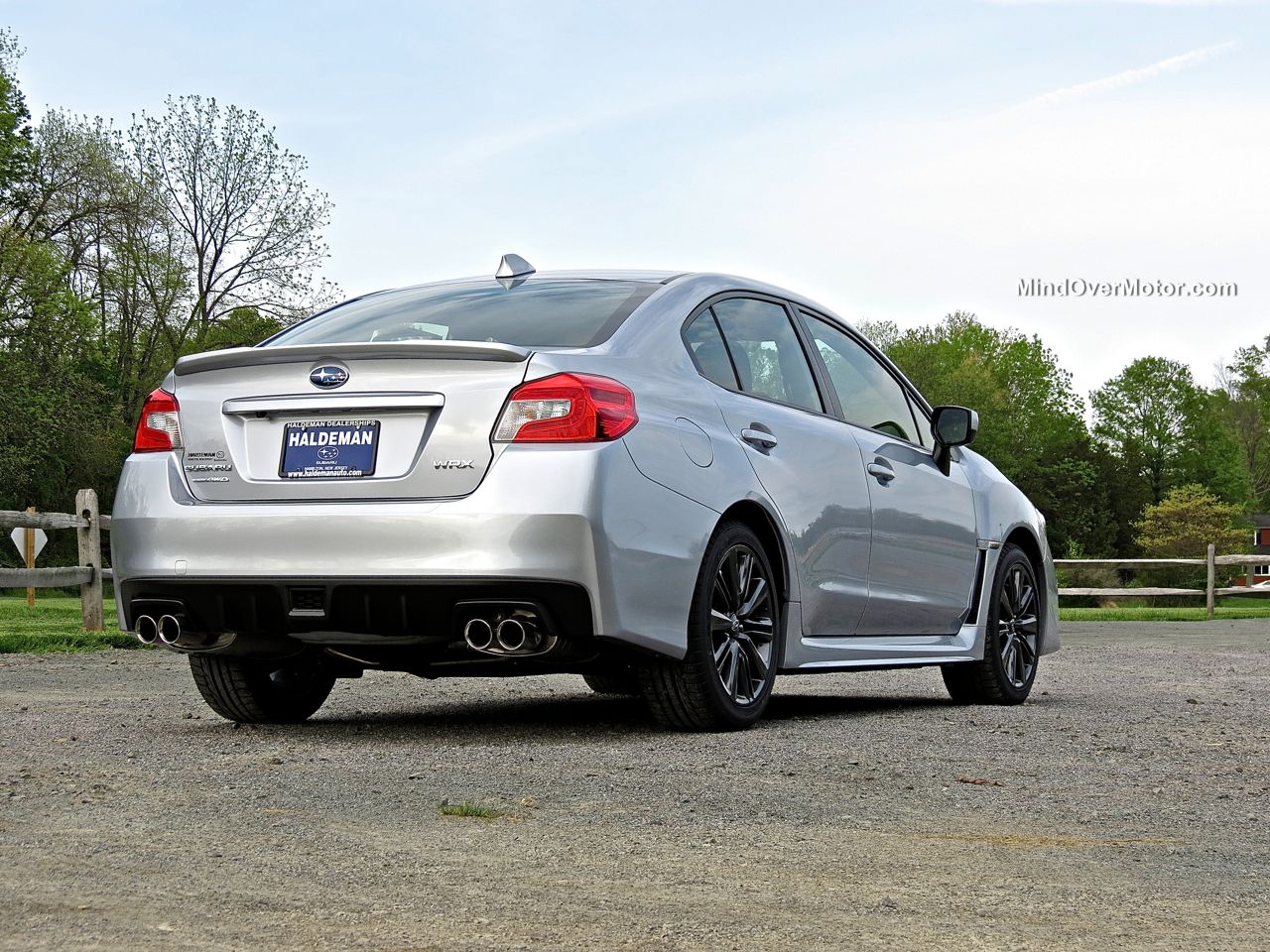

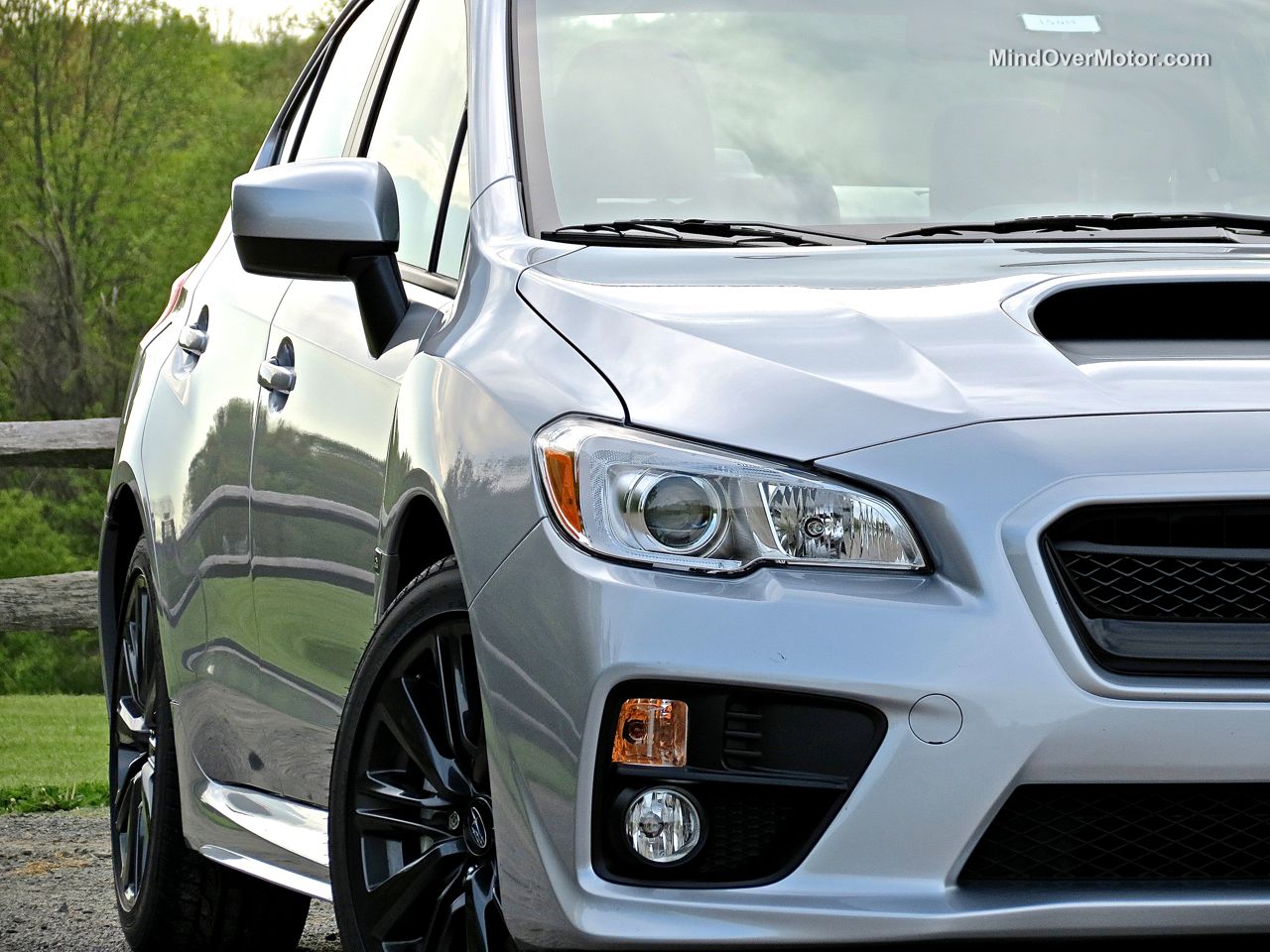
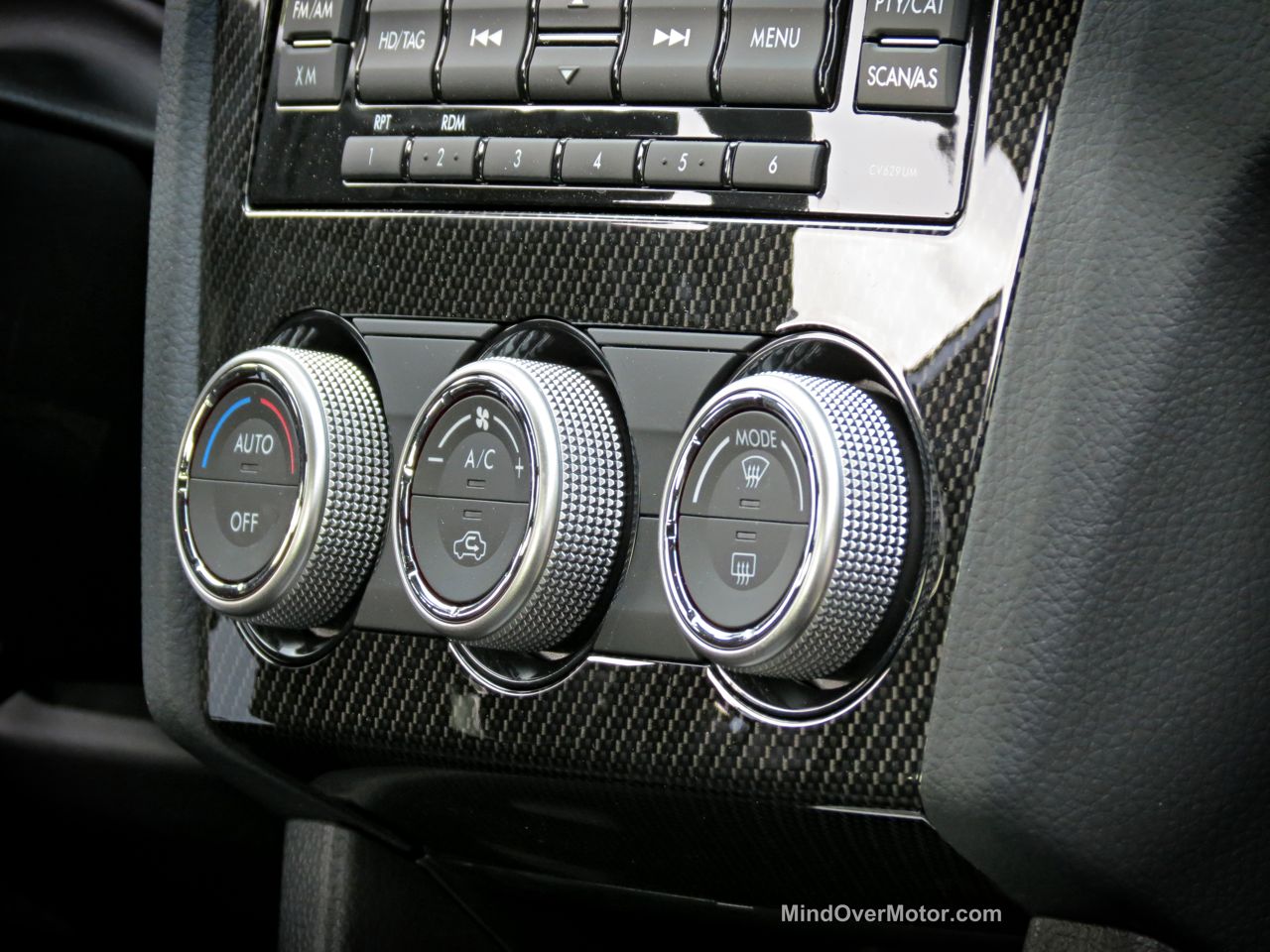
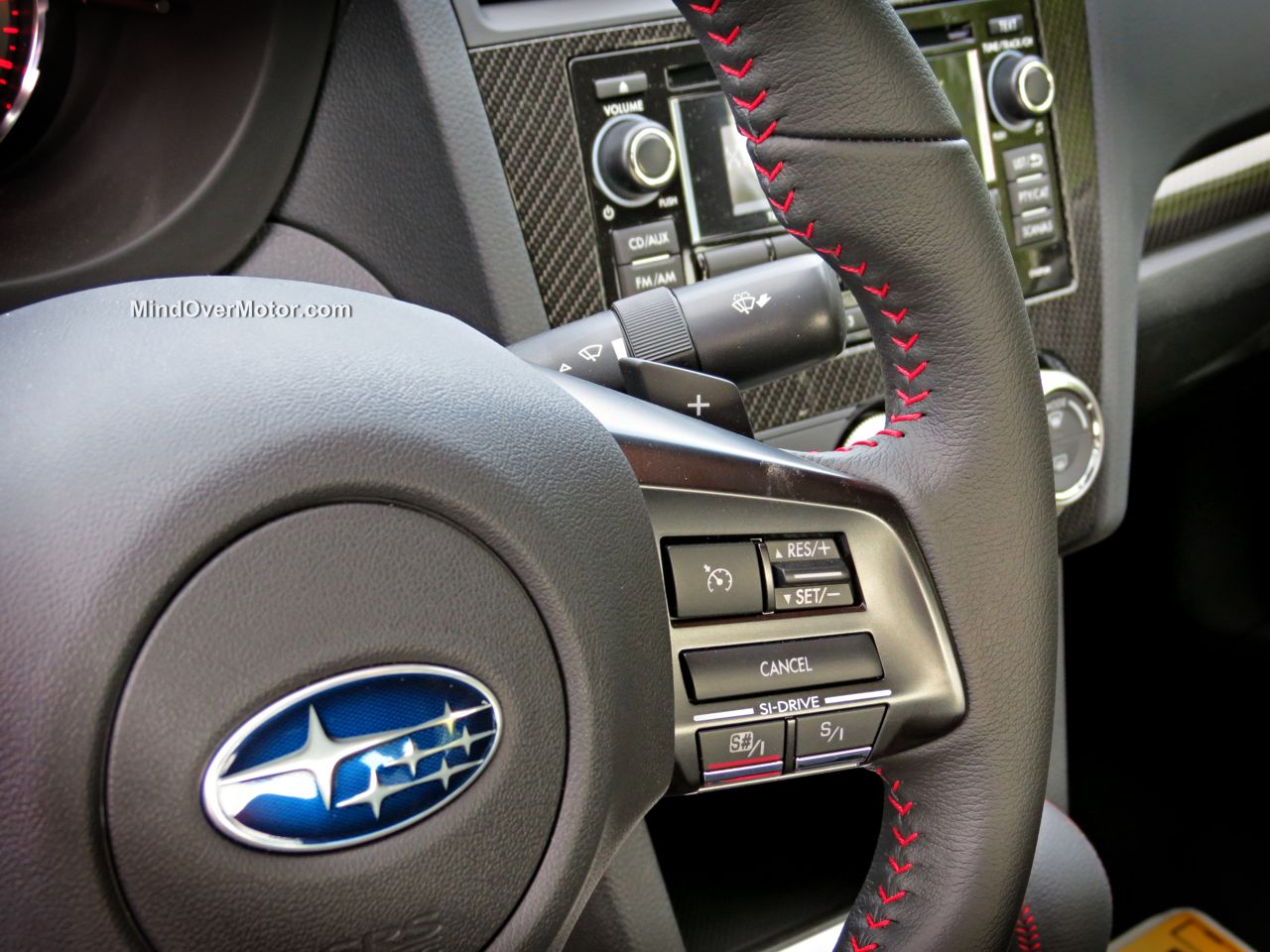

Great, thorough review. A fantastic daily driver for people who enjoy driving performance vehicles!
LikeLike
I love how thorough you are in the review and how you explain things so well for even someone like me, who doesn’t know much about cars other than what’s seen on top gear.
LikeLike
Thanks. Thats what I was going for. Too many media outlets have just brushed over the CVT model, but the details have to be presented in a way everyone can understand.
LikeLike
Very nice review – comprehensive and balanced assessment of the CVT. It is tiresome to read the rants of folks who draw generalized conclusions based on past implementations of CVT without reference to how it has been implemented here. It is really interesting to watch videos of Subaru engineers discussing their design goals for the WRX – they essentially used the Porsche 911 as a benchmark – and apparently it shows!
LikeLike
Awesome review. I love how you don’t just bash the cvt trans because its a “CVT”. Not everyone wants a manual trans. So to get a really good review on the CVT trans is really nice. I have a manual Scion TC and at times i hate driving a manual trans in dallas stop and go traffic. Ill defiantly want to get a CVT trans now.
LikeLike
I would’ve loved to get the 6-speed manual, but back in ’07 I was in my friend’s car that broke in half. Nearly lost my right arm (that whole entire section on my body is in constant pain, which gets worse the more I use my arm), hip broke in 3 places (both sides and the tailbone, with the left side being the worst), fractured vertebrae, 4 ribs, etc, etc. And I’d been driving stick since ’08. Really just got sick of the ever-increasing pain from it.
LikeLike
I just decided to purchase a ’15 Premium with CVT…a nice counterpoint to my Boxster S 6 spd. It reminds me a great deal of my ’11 GTI…also a great car, but I prefer the trunk. Great review….once I’ve had the chance to drive the car for awhile, I’ll come back and reread
LikeLike
Sounds great! Hope the car treats you well.
LikeLike
Love the article about cvt I’ve factory ordered back in December, it’s now been 11 weeks and still waiting
LikeLike
Great article. It’s great to see an honest assessment of the car that doesn’t immediatly bash the CVT based on previous applications in other vehicles. I drove it back in October and loved it. I ordered a limited CVT in dark gray metallic November 2nd. It finally arrived over the weekend and I’m picking it up tomorrow. I needed a new daily driver “family car” as my other car is a E93 BMW and it is not exactly winter friendly for New England. Since it is a 3rd car, the only way I could get the “purchasing department” aka wife to approve is if I got something with automatic as she refuses to drive stick.
LikeLike
Haha. Gotta make sure the board of directors approves. Good choice tho for sure.
LikeLike
I’ve had one since November…a complement to my MT6 Porsche Boxster S. I agree with everything said in the review…this is a fun car to drive every day…and as I add varied performance improvements (performance intake, j pipe, retune) I’m slowly and steadily increasing HP and TQ to match the STI…but still look like an every day commuter.
LikeLike
Glad you’re enjoying the car! Just be sure that you’re careful with the upgrades, though. I’ve seen some tuners out there saying the connecting rods can only handle up to around 350ft/lbs of torque. I believe Cobb had an article on it.
LikeLike
Interesting…I looked on the Cobb site and couldn’t find it. Can you send me the link or title?
LikeLike
Here you are. Definitely worth looking into before you keep modding.
http://blogs.cobbtuning.com/2014/12/09/2015_wrx_tuning_results/
LikeLike
Thanks…here is what I found: “Our car has been holding up without issue (knock on wood). I think as people increase torque significantly with E85 and larger turbos we’ll likely start to see more failures.”….which is not my plan. I’ve added the Mishi intake and AP. My next (and last mod) will be the J-Pipe, where I expect to see the biggest HP/TQ boost…which I don’t expect to be as high as Cobb found. The biggest problem will be finding a tune for Mishi intake and Cobb (or Mishi) j-pipe…Cobb has a tune for the Mishi intake, but don’t yet have a J for CVT (they’re working on it)…and it is unclear to me if when they release the J if they will also release a tune for the J and the Mishi in…if not, I’ll have to pay my tuner which gets into high dough for dyno time plus tuning.
LikeLike
Sounds solid. Thanks for letting me know what you found.
LikeLike
Somehow I regret buying the CVT version (I am capable of driving manual, and had been driving one for 7 years).
but yes the CVT in the WRX is very good – at least when compared to the new Civic 1.5T CVT!
And… that was a very detailed review. Job well done!!
LikeLike